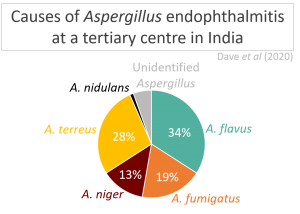Submitted by Aspergillus Administrator on 3 July 2009

Industrial scale composting is expanding quickly in the UK and across europe as alternatives to disposing of waste via landfill are explored more vigorously.
Composting is mainly done via open ‘windrows‘ where piles of rotting vegetable matter are left in the open air and turned mechanically at regular intervals. Each turning releases vast clouds of fungals spores, principally Aspergillus fumigatus, an important human pathogen and allergen. Those clouds are rapidly dispersed into the air and diluted such that a safe distance from the composting site should be achievable.
How safe is this practice to both the workers at the composting site and to people living close by? Newspaper articles contend that composting is not yet carried out under completely safe conditions, a story based on a recent paper by Drew et.al. which found that risk analyses at most UK locations where composting is carried out were inadequate.
A rebuttal was issued by pro-composting groups here calling the newspaper stories ‘scaremongering’ and suggesting that living close to a composting site is no more a risk to health than a walk in the woods:
anyone who walks through a wood especially in the autumn will be exposed to higher levels of these spores than living near a compost site.
I would suggest that it is impossible or impractical to identify individuals who’s health is at risk from breathing in fungal spores. Those individuals can include those with poor immune systems & asthmatics. That risk is probably increased if increased number of spores are breathed in therefore until it is possible to warn all people at risk a large margin for safety should be used when setting boundaries for minimising health risks. Risk analyses need to be of a consistently high standard.
News archives
-
Title
Date


